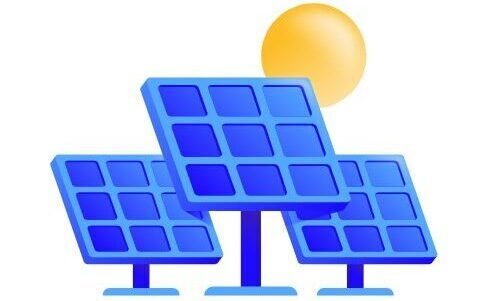Introduction
In recent years, the adoption of solar energy in Pakistan has seen a significant surge due to rising electricity costs, frequent power outages, and increasing awareness of environmental sustainability. For a typical household aiming to generate up to 200 units (kWh) of electricity per month, solar panels offer a viable solution. This guide explores the feasibility, benefits, costs, and steps involved in installing a solar panel system for home use in Pakistan.
Understanding Your Energy Needs
To begin with, it’s essential to determine the energy consumption of your household. A unit of electricity is equivalent to one kilowatt-hour (kWh). For context, common household appliances and their average monthly consumption in units are as follows:
- Refrigerator: 30-50 units
- Air Conditioner: 100-150 units (depending on usage)
- LED Lighting: 10-20 units
- Ceiling Fans: 20-30 units
- Washing Machine: 10-15 units
Summing these estimates, a household with moderate use of appliances could consume around 200 units per month. Therefore, your solar panel system should be designed to meet or exceed this demand.
Solar Panel System Components
A solar panel system for home use typically consists of:
- Solar Panels: Photovoltaic (PV) panels that convert sunlight into electricity.
- Inverter: Converts the direct current (DC) produced by the panels into alternating current (AC) used by household appliances.
- Battery Storage (Optional): Stores excess energy for use during nighttime or cloudy days.
- Charge Controller: Regulates the voltage and current from the solar panels to the battery.
- Mounting Structures: Supports and secures the panels on the roof or ground.
- Wiring and Other Accessories: Connects the components and ensures safe operation.
Calculating the Size of Your Solar Panel System
To generate 200 units of electricity per month, you need to consider the following factors:
- Average Solar Radiation: Pakistan receives ample sunlight, with an average solar irradiance of 5-6 kWh/m²/day.
- System Efficiency: Accounting for losses due to inefficiencies in the system (typically around 20%).
Using these factors, the required daily energy output can be calculated as follows:
[ \text{Daily Energy Requirement} = \frac{200 \text{ units}}{30 \text{ days}} \approx 6.67 \text{ kWh/day} ]
Considering system efficiency:
[ \text{Adjusted Energy Requirement} = \frac{6.67 \text{ kWh/day}}{0.8} \approx 8.34 \text{ kWh/day} ]
Given the average solar irradiance of 5.5 kWh/m²/day:
[ \text{Required Solar Panel Capacity} = \frac{8.34 \text{ kWh/day}}{5.5 \text{ kWh/m²/day}} \approx 1.52 \text{ kW} ]
Therefore, a 1.52 kW solar panel system would suffice to generate 200 units of electricity per month.

Costs and Financial Incentives
The cost of a solar panel system in Pakistan varies based on the quality of components and installation services. As of 2024, the average cost of installing a 1.52 kW system is approximately PKR 150,000 to PKR 200,000. This cost includes panels, inverter, mounting structures, and installation charges.
Moreover, the Pakistani government offers various incentives to promote solar energy, such as net metering, which allows you to sell excess electricity back to the grid, reducing your electricity bills further. Some banks and financial institutions also offer loans at subsidized rates for installing solar systems.
Installation Process
- Site Assessment: A professional assesses your site to determine the best location and orientation for the solar panels, typically on the roof.
- System Design: Based on the assessment, a customized system design is created, including the number of panels, inverter capacity, and mounting structures.
- Permits and Approvals: Obtain necessary permits from local authorities and approvals from the electricity distribution company for net metering.
- Installation: Professional installers set up the panels, inverter, and other components, ensuring all safety and performance standards are met.
- Inspection and Commissioning: Post-installation, the system is inspected, tested, and commissioned for use.
Maintenance and Performance Monitoring
Solar panel systems require minimal maintenance. Regular cleaning of the panels to remove dust and debris, periodic inspection of wiring and connections, and ensuring the inverter is functioning correctly are essential. Additionally, many systems come with monitoring software that allows you to track performance and energy generation in real-time.
Conclusion
Investing in a solar panel system to generate 200 units of electricity per month is a practical and sustainable choice for households in Pakistan. Not only does it offer financial savings by reducing electricity bills, but it also contributes to a cleaner environment by decreasing reliance on fossil fuels. With the availability of government incentives and financing options, adopting solar energy has become more accessible than ever. By understanding your energy needs, selecting the right system components, and ensuring proper installation and maintenance, you can harness the power of the sun to meet your household energy demands efficiently and effectively.

